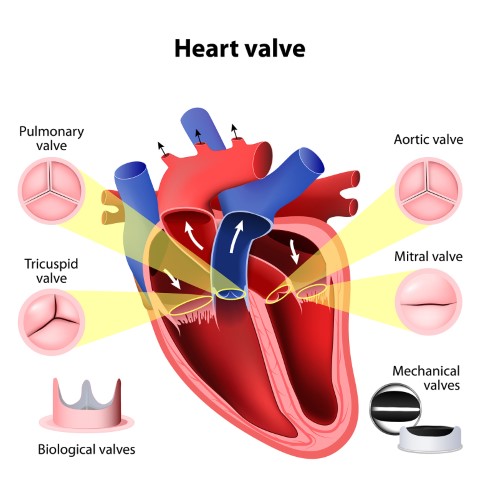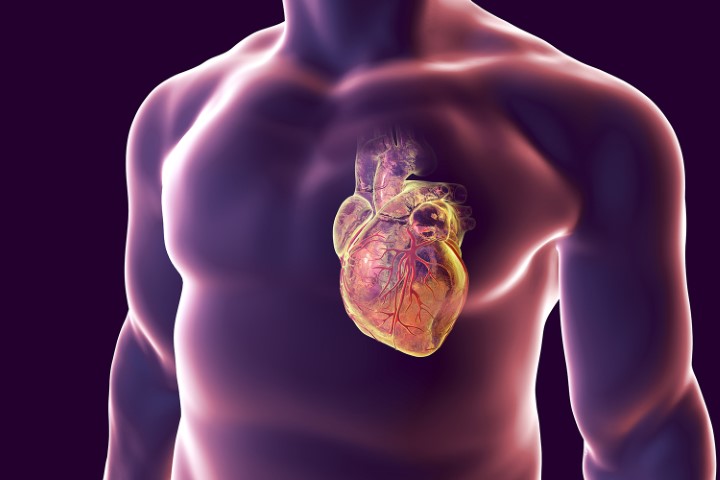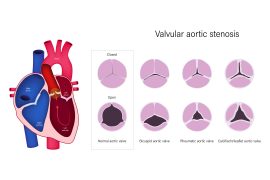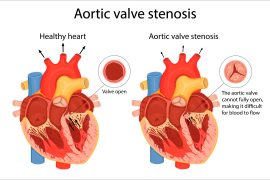As we all know that our heart is the center of the circulatory system. It is a network of vessels that delivers blood to every part of the body. To tell you more about how our heart functions, let us know more about the four valves that make the whole functioning possible. The heart has four valves – mitral valve, tricuspid valve, pulmonic valve, and aortic valve.
The mitral valve and tricuspid valve are located between the upper heart chambers and lower heart chambers and amidst the ventricles and the major blood vessels, located are the aortic valve and pulmonic valve.
FUNCTIONS OF THE VALVES
These valves have different roles that keep the heart functioning properly. Hence, it should be healthy and functioning. It must be open all the so that blood can pass and valves must close tightly so no blood flows into another chamber.
When we talk about the aortic valve, it separates the left ventricle from the aorta, allows blood to leave the heart from the left ventricle through the aorta and the body, and prevents the backflow of blood from the aorta to the left ventricle.
When the aortic valve isn’t working properly, it becomes difficult for the heart to send blood to the rest of the body which leads to various aortic valve diseases.
AORTIC VALVE DISEASE
There are two major types of aortic valve diseases:
Aortic Stenosis
Aortic Stenosis is the narrowing of the Aortic valve opening. The narrowing of the valve could lead to reduction or blockage of the blood flow from the heart into the main artery to the body and towards the rest of the body. This forces the heart to work harder.
Aortic Regurgitation
Aortic regurgitation or insufficiency causes when the valve doesn’t close properly causing the blood to leak into the heart which over time makes the heart stretch and enlarge which later can lead to heart failure.
AORTIC VALVE TREATMENT
Treating the dysfunction of the aortic valve depends upon the severity of the aortic disease. Traditionally, Aortic Valve Replacement Surgery was done through traditional open-heart surgery. This procedure involves a cut in the chest which is risky and requires a longer recovery time. Another way is replacing a valve via a minimally invasive method where an incision is made in the chest or a catheter inserted in the leg or chest. It is by far the safest option and this procedure is called TAVR or Transcatheter Aortic Valve Replacement.
This can be done using a mechanical valve or a biological valve.
WHAT IS A BIOLOGICAL VALVE?
While performing the TAVR procedure, the doctor removes the damaged valve and replaces it with a mechanical valve or biological valve. Biological valves are also known as bioprosthetic valves. That is a valve that is made an animal tissue or human heart tissue. Animal tissue is known as Xenograft and human heart tissue is known as Homograft. Animal tissues are made from a cow or pig. But, to perform this procedure, depends on the severity of the condition and the situation of the patient. Accordingly, if needed, the doctor might suggest replacing the damaged aortic valve with a biological valve.
The reason why the biological valve is used is that they degenerate over some time and they comparatively require no blood-thinning medicines, post-surgical care, and hospital stay.
Biological valves are not as strong as mechanical valves and they need to be replaced every 10 years or so. These valves breakdown much faster in children and young adults, so these valves are used mostly in elders.
WHAT IS A MECHANICAL VALVE?
Titanium and carbon are the materials used to make Mechanical valves. These valves are sewn in the place of original valves, they consist of two leaflets and a metal ring surrounded by a ring of knitted fabric. The advantage of these valves is that they are durable and last longer. But the valves provide a surface on which it is easy to form a blood clot.
These valves should be avoided for women of child-bearing age and those with a high risk of falls or bleeding.



HOW IS TAVR PROCEDURE PERFORMED USING A BIOLOGICAL VALVE?
TAVR procedure is a minimally invasive procedure that is used to repair or replace the damaged aortic valve. On the day of surgery, the doctor will decide which type of anesthesia is best for you but your heart will continue to beat during the procedure. Once you are asleep, a short hollow tube called a sheath is inserted into your femoral artery. The new valve is placed in the delivery system using a balloon at the end of the catheter. It contains the replacement valve folded around it. This delivery system is pushed up to your aortic valve.
Once it reaches the diseased valve, it is inflated which pushes aside the leaflets of your diseased valve. This valve replacement surgery usually does not require cardiopulmonary bypass. Once the biological valve is placed, the balloon is deflated and the catheter is removed.
The doctor will check if the new valve is opening and closing like the normal aortic valve should and close the incision once the new biological valve starts functioning properly.
PROS OF USING A BIOLOGICAL VALVE DURING TAVR
The benefits of replacing the damaged Aortic Valve with A Biological Valve is that they don’t come with a higher risk of a blood clot. They are the best for people over the age of 65, pregnant women, and people who have kidney stones.
Valves used from Bovine (cow) is not an actual valve but it is a tissue surrounding the cow’s heart. It is strong and flexible.
Using a biological valve during TAVR operation for pregnant women is more beneficial because it doesn’t require using blood thinners as consuming those medicines can harm the fetus.
CONS OF USING A BIOLOGICAL VALVE DURING TAVR
TAVR, of course, includes some risks. Generally, risks are minimal which includes complications in blood vessels, infection – if not taken care of it properly, etc. Only in extreme cases, does one suffer from stroke if post-surgical care is not taken properly. It all depends on one’s health and medical history. So, if you or somebody you know is suffering from post-surgical complications, it is better to consult a doctor immediately.
To conclude, it is important to understand the risk and advantages of valve replacement surgeries. It is better to listen to the advice of your doctor and research about TAVR in depth before undergoing the procedure. TAVR is a procedure of the heart, all the precautions must be taken into consideration. And after the TAVR procedure, you should constantly be in touch with your doctor for regular health check-ups.




